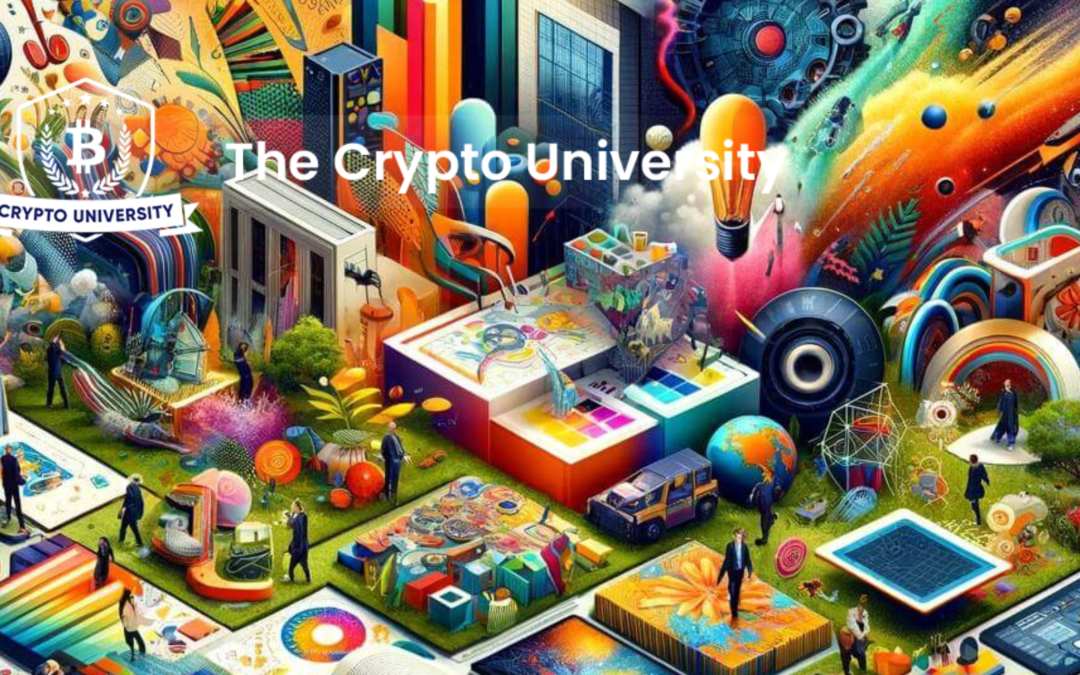Contents
- 1. AI’s impact on architecture and product design
- 2. Exploring new dimensions with AI
- 3. Bridging human and machine creativity
The year 2023 has been a turning point in the application of AI to design, with remarkable advances in the fusion of art and science. One of the most influential voices in the design world, Designboom, has selected the best AI-driven design concepts that its readers have submitted this year. These examples highlight how technology is changing the design scene by fusing cutting-edge AI techniques with creative vision in a stunning way.
- In 2023, AI will revolutionize design, resulting in inventive and fantastical designs.
- AI combines creativity and technology in product design and architecture.
- Collaboration between humans and AI shows promise for increased innovation.
AI’s impact on architecture and product design
The use of AI in architecture has been one of the year’s most notable subjects. Using programs like DALL·E and Midjourney, architects have created futuristic buildings that transform our built environments. For example, the Oblivion House by minD Design in the Dom World Metaverse is a wonderful example of how to combine digital design, architecture, and nature. Situated on a cliff, this physical and digital building provides an all-encompassing lifestyle by incorporating vast views of the outdoors into its architecture.
AI has been utilized by product designers such as Momit Sam York to reimagine everyday products in a way that combines creativity and nostalgia. York’s ideas, which combine practicality with a whimsical look through the use of Midjourney, include a radio shaped like a gummy bear and a blender fashioned like a bunny, demonstrating the ability of AI to reimagine commonplace objects.
Exploring new dimensions with AI
AI has also made it possible for designers to investigate and represent ideas that are beyond the realm of possibility. For example, Kaveh Najafian’s AI-generated series of abandoned mega-ships depicts a future in which enormous buildings transform into floating ecosystems, signifying humanity’s tenacity and pursuit of advancement. Rolando Cedeño de la Cruz has combined historical architecture and current design sensibilities in his Midjourney-inspired reinterpretation of ancient ziggurats as contemporary cultural attractions.
The AI-generated skateparks in Paris, designed by ūti architects, are another intriguing example of AI in design. Skateparks are skillfully incorporated into the architectural fabric of the city through these designs, giving Parisian skating culture a strange twist. Stable Diffusion 2 is used by Hassan Ragab in his series “The Cities We Build” to imagine futuristic urban landscapes that go against conventional ideas of what makes buildings beautiful and useful.
Bridging human and machine creativity
The potential of AI in design to augment rather than replace human creativity is an interesting feature. Examples of this synergy are projects like Arvind Sanjeev’s Ghostwriter typewriter, which uses OpenAI’s GPT-3 model. In contrast to the hectic digital world, The Ghostwriter offers a thoughtful and contemplative creative process that users are invited to co-create with AI.
The concept design for Laika by Jihee Kim, an AI robot dog intended to provide both physical and emotional support during space flight, exemplifies AI’s ability to provide solutions that meet human requirements in unusual situations. These initiatives demonstrate how humans and machines are interacting more and more, with AI playing a creative partner.
The use of AI in design is anticipated to increase as 2024 approaches. Designboom’s top entries reveal AI’s transformative impact on the creative industry, transcending its role as a mere tool. AI empowers designers to redefine possibilities, particularly in architecture and product design.
Future AI design holds promise with evolving tools and methodologies, unlocking creative opportunities. The lesson from 2023: Human-AI collaboration yields transformative results, reshaping design beyond imagination.
